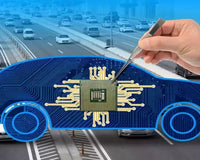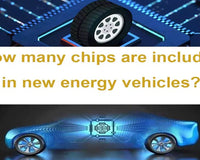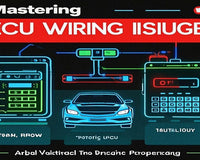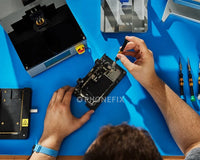In today's technologically advanced vehicles, the Engine Control Unit (ECU) acts as the brain, managing critical functions for optimal performance. However, even a minor issue in the ECU's wiring can lead to significant problems. Understanding how to identify and fix these issues is crucial for maintaining your vehicle's health and ensuring it runs smoothly.
The ECU, commonly referred to as the Engine Control Module (ECM), is an embedded system that manages the engine’s functioning. To maintain optimal engine performance, it interprets data from various sensors surrounding the engine and other important parts, modifies the fuel injection and ignition timing, and adjusts other parameters.
Importance of ECU Wiring.
In order to accept inputs from sensors and provide outputs to actuators, the ECU is dependent on a sophisticated network of wires. The ECU uses these wires to send and receive critical signals that regulate and monitor engine performance. Any interference with these signals might result in inaccurate measurements, misfires, subpar operation, or even engine failure. Therefore, it’s imperative to keep the ECU wire intact.
Signs of ECU Wiring Problems.
Recognizing the symptoms of ECU wiring issues is the first step in addressing them effectively. Common signs of ECU wiring problems include a check engine light, intermittent engine misfires, and poor fuel economy.
A check engine light is often the first indication of a problem with the ECU or its wiring. This warning light can be triggered by a wide range of issues, including faulty sensors or damaged wiring. Start by connecting FNIRSI FD10 diagnostic scan tool to the vehicle's OBD-II port to retrieve error codes stored in the ECU. These codes often point to specific circuits or sensors that may be experiencing issues. Pay close attention to any codes related to the sensors connected to the ECU, as they can guide your diagnostic efforts.
Intermittent engine misfires are another common symptom of ECU wiring problems. Misfires can occur when the ECU fails to deliver the correct signals to the ignition system or fuel injectors due to faulty wiring. If you experience frequent misfires, it's important to inspect the wiring harness and connections for signs of wear or damage. Look for frayed wires, loose connectors, or corroded terminals that may be impacting the electrical flow. Addressing these visible issues early on can prevent more serious problems from developing.
Poor fuel economy is a telltale sign of ECU wiring issues. When the ECU doesn't receive accurate data from the sensors, it may not adjust the air-fuel mixture correctly, leading to inefficient combustion and increased fuel consumption. If you notice a sudden drop in fuel efficiency, it's worth investigating the wiring connections to the ECU. Use a multimeter to test the continuity and resistance of the wiring. Continuity tests help verify that the wiring is intact and not broken at any point. Resistance measurements can indicate whether there are any high-resistance connections that could be affecting the signals sent to the ECU. By systematically testing each circuit, you can pinpoint the source of the problem.
Once you have identified the faulty wiring connections, it's time to address the issue. Start by disconnecting the battery to ensure safety during repairs. Carefully repair or replace damaged wiring, ensuring that all connections are secure and properly insulated.
For minor wiring damage, such as frayed insulation, use electrical tape or heat shrink tubing to insulate the exposed conductors. If the wiring is severely damaged or broken, it may be necessary to splice in new sections using Electric soldering iron or crimp connectors. Ensure that the repaired sections are properly insulated to prevent future issues.
After completing the repairs, it's crucial to test the system to ensure that the wiring issues have been resolved. Reconnect the battery and perform a diagnostic scan to verify that no error codes are present. Additionally, conduct functional tests to confirm that the vehicle's systems are operating as expected.
Prevention is key to avoiding future ECU wiring problems. Regular maintenance and inspections can help you identify potential issues before they escalate. Additionally, proper handling of the wiring and connectors during repairs can prevent unnecessary stress and damage.
Understanding how to identify and fix ECU wiring issues is a valuable skill for anyone involved in vehicle maintenance and repair. By recognizing the signs of wiring problems, utilizing the right tools, and following a systematic approach to diagnosis and repair, you can ensure the smooth operation of your vehicle's systems.
Remember to prioritize regular inspections and preventive measures to avoid future wiring issues. By taking proactive steps to maintain the integrity of the wiring, you can extend the lifespan of your vehicle's electrical components and enjoy a reliable driving experience.
Mastering ECU Wiring Issues for Smooth Vehicle Performance









